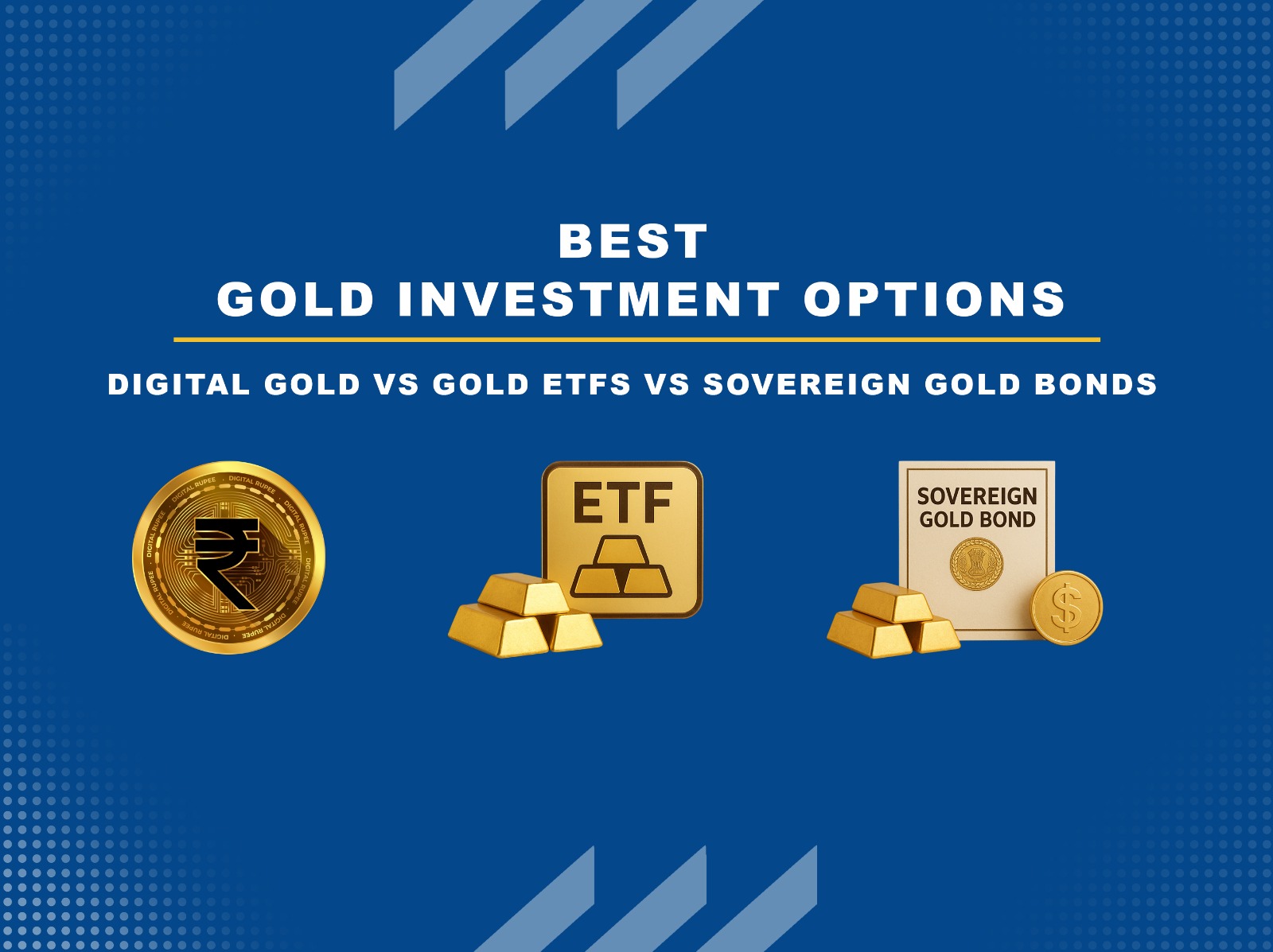Digital Gold vs Gold ETFs vs Sovereign Gold Bonds: Which is the Smarter Investment in 2025?


Gold has always been a trusted investment in India, especially during uncertain times. But in 2025, investors are no longer limited to buying jewelry or gold coins. Today, three popular ways to invest in gold are Digital Gold, Gold ETFs, and Sovereign Gold Bonds (SGBs). Each comes with its own benefits, risks, and ideal use cases. If you are wondering which option suits you best this year, this guide will break it down for you.
Digital gold lets you buy gold online through apps, brokers, and payment platforms. You can start investing with as little as ₹1, and your gold is backed by physical gold stored in vaults.
Pros:
Cons:
Best for: Beginners and small investors who want flexibility.
Gold Exchange Traded Funds (ETFs) are listed on stock exchanges and represent gold prices. You buy units through your Demat account, just like shares.
Pros:
Cons:
Best for: Investors who want regulated, transparent exposure to gold.
SGBs are government-backed securities issued by the RBI. Instead of holding physical gold, you get a certificate with guaranteed returns.
Pros:
Cons:
Best for: Long-term investors seeking both safety and returns.
|
Feature |
Digital Gold |
Gold ETFs |
Sovereign Gold Bonds |
|
Regulation |
Not regulated |
SEBI regulated |
RBI/Government |
|
Liquidity |
High (24x7) |
High (stock market hours) |
Low–Medium |
|
Minimum Investment |
₹1 |
1 unit (~1g) |
1g |
|
Returns |
Linked to gold price |
Linked to gold price |
Gold price + 2.5% interest |
|
Tax Benefits |
Capital gains tax |
Capital gains tax |
Tax-free after 8 years |
|
Best For |
Beginners, flexibility |
Traders, transparent investors |
Long-term wealth builders |
In 2025, the smartest strategy could be to combine all three depending on your goals: use digital gold for short-term savings, ETFs for trading and liquidity, and SGBs for building long-term wealth.